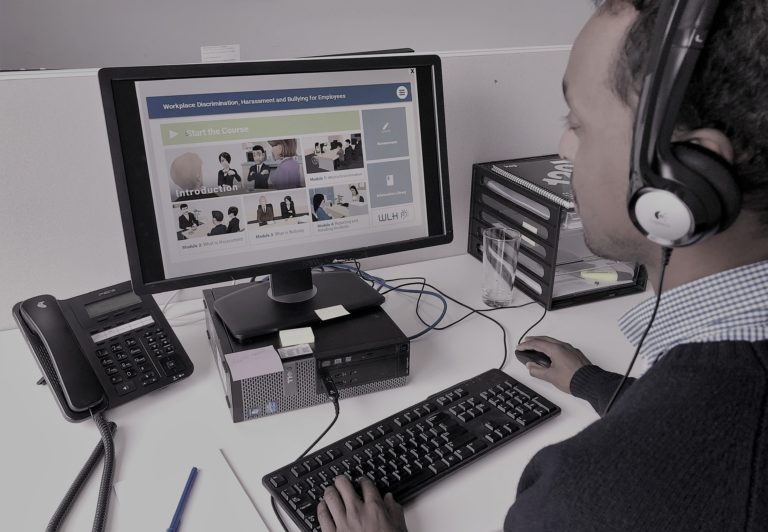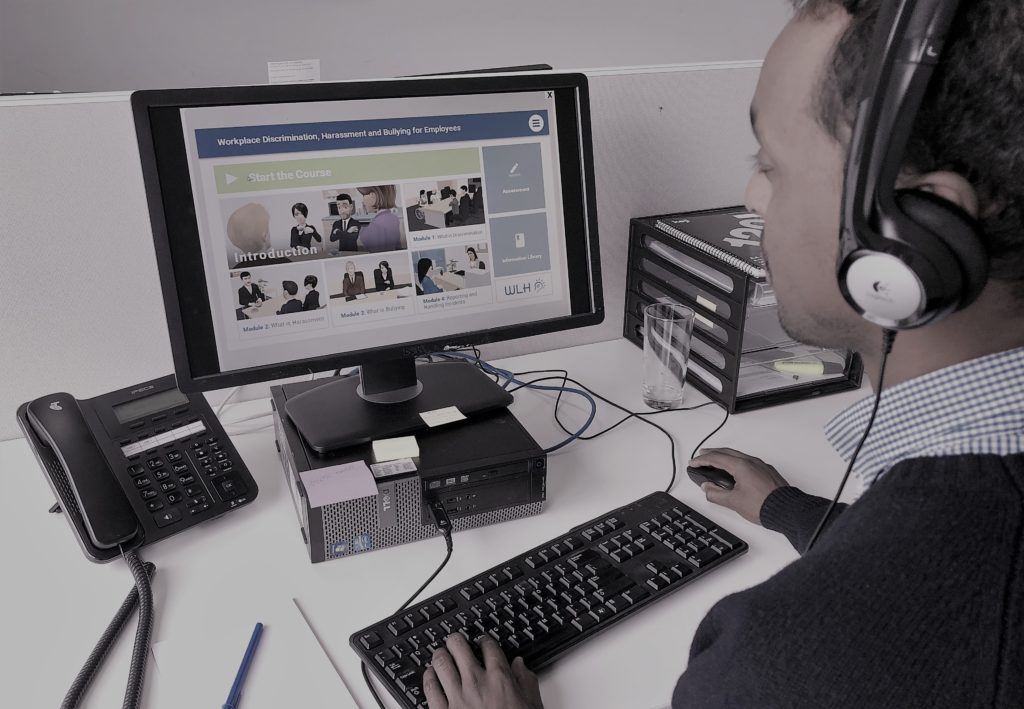More than ever organisations and learners alike are looking to supplement or replace face-to-face training with eLearning. Compliance training focusing on workplace, discrimination and harassment is a topic often put on the eLearning menu. But does eLearning stack up as an effective learning method, in particular, when it comes to teaching compliance-based curriculum? The answer is that it can, providing the design of the learning experience facilitates the right learnings in a manner that drives retention and engagement. In fact, there are some good reasons to use eLearning. Here they are: A self-paced intervention Everyone learns at their own pace…

More than ever organisations and learners alike are looking to supplement or replace face-to-face training with eLearning. Compliance training focusing on workplace, discrimination and harassment is a topic often put on the eLearning menu. But does eLearning stack up as an effective learning method, in particular, when it comes to teaching compliance-based curriculum? The answer is that it can, providing the design of the learning experience facilitates the right learnings in a manner that drives retention and engagement. In fact, there are some good reasons to use eLearning. Here they are:
- A self-paced intervention
Everyone learns at their own pace hence self-paced learning can maximise retention. Online training allows learners to undertake the program at their own pace, focus on areas that they need more time to understand and review module content any number of times. However, if it is poorly designed it will have few cognitive loading benefits, retention will be low and the message will go out the window.
Make sure that your selected eLearning experience allows for easy movement horizontally across the modules. You should be able to review and re-review content.

- Flexible and Scalable
Many eLearning solutions allow learners the ability to access training on any mobile device at times convenient to them thus accommodating remote workers and shift workers alike. This also allows eLearning to be a scalable intervention that can reach across diversified and widely spread workforce’s.
A really powerful driver for using eLearning is a lack of access to computers across a highly operational workforce.
- A reinforcement tool or blended approach
Many organisations see the benefit of a blended approach by running eLearning every second year to compliment individual learning with face-to-face training roll-outs. Similarly, organisations are frequently using eLearning as a means of reinforcing learning and measuring comprehension following on from face-to-face training.
Whatever, the reason for using the combination approach, they have to ‘talk to each other’ and not contradict or confuse the overall message.
- Customisable
eLearning programs can be customised to make the training relevant and specific to the organisation and learner. This customisation can take the form of inclusion of a company logo as well as links to company policies and procedures. More detailed customisation can include the development and addition of new messages, animations, activities and assessments as well as the use of company specific processes and practices.
- Measurable
eLearning reporting tools allow HR and Managers to easily measure understanding of key concepts and monitor progress of employees through the programs. Such reporting tools can ensure all staff are up to date on compliance training.
- Faster delivery
One of the key advantages of eLearning over traditional classroom-based training is that it has a quicker delivery and roll-out time. Off the shelf elearning programs allow organisations to roll out training programs within a few days. Face-to-face training can often take a long lead time.
- Greener and cost-effective
Because of the speed and ease in which it is delivered, the costs of learning and development for an organisation can be reduced. With eLearning there is also no need for materials or travel making this a more environmentally friendly option.
- Consistent Message
One of the really attractive elements of eLearning is that it ensures a consistent message. Sometimes the message can get lost, especially if a range of facilitators deliver face-to-face interventions that are not well rehearsed.
This is all the more reason to make sure that the message is right!
But will eLearning ever replace well-constructed face-to-face session?
As a distributor of an eLearning product, iHR Australia believes eLearning will never replace well designed face-to-face training with a strong practical focus as the most effective and powerful methodology for getting strong messages about behaviour across the workforce. Managing Director Stephen Bell says “We are really proud of our eLearning products but if you want to challenge people about behaviour in the workplace, touch their emotions and have the important discussions then it is really best done face-to-face. That’s why our intervention with actors is so popular. However, as a tool for large, immediate and measurable rollouts, for companies on a tight budget or as part of a blended solution our eLearning hits the mark. A lot out of time went into making iHR eLearning special”.
Learn more about iHR Australia’s Workplace Bullying Discrimination and Harassment eLearning for Managers and Employees.
Recent articles

Overcoming the Middle Manager Sandwich: CEO Strategies for Success


